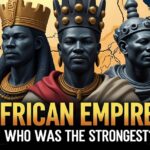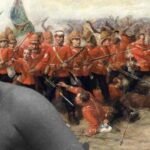Tracing Raila Odinga’s journey from detention and exile to Prime Minister and continental statesman, exploring how wounds, both physical and political, shaped Kenya’s democratic evolution.
From Torture to Triumph
On a hot afternoon in Kisumu in 2002, Raila Odinga stood before a restless crowd, his voice carrying both defiance and fatigue. As he blinked hard against the sun and pressed his fingers to his temples, a few supporters whispered, “He’s still hurting.” The small gesture, almost invisible to many, hinted at the unseen wounds that had followed him for decades.
Behind the confident political figure stood a man who had endured years of detention, torture and exile, scars that would shape not only his body but the course of Kenya’s politics.
This story traces those hidden years drawing from verified historical records, family testimonies, and human-rights reports to understand how suffering forged one of Kenya’s most resilient political lives. It explores what is documented and what remains contested: the arrests, the isolation, the injuries, and the quiet endurance that defined Raila Amolo Odinga long before he became Prime Minister.
Steps through history
- 7 th January 1945 — Birth in Maseno to Jaramogi Oginga Odinga and Mary Juma Odinga.
- Late 1960s–early 1970s — Studies engineering in East Germany.• August 1982 — Failed coup attempt; widespread detentions begin; Raila detained without trial.
- Mid-1980s — Exile in Uganda; travels acknowledged in exile networks and some
-Norwegian press (exact years still to verify). - 29th December 1992 — Elected Member of Parliament.
- 27th December 2007 — Disputed presidential election; national crisis.
- 2008-2013 — Prime Minister; principal actor in drafting the 2010 Constitution.
- 2018 — “Handshake” with President Uhuru Kenyatta.
- March 2024 — Declared candidacy for African Union Commission.
- 15th October 2025 — Death; emerging public reflections on his health and earlier trauma.
Family and Formative Years
Raila grew up in Maseno, shaped by two powerful influences. His father, Jaramogi Oginga Odinga, a teacher-turned-nationalist who would later become Kenya’s first Vice President. Growing up in a household steeped in political thought, Raila’s childhood was both privileged and burdened. The family’s conversations often revolved around freedom, justice, and the moral weight of leadership.
His father’s defiance of colonial and post-colonial authority left a deep imprint. Jaramogi was not merely a politician he was a man of fierce conviction, unafraid to challenge systems that betrayed the promise of independence. For young Raila, politics was never abstract. It was lived experience: the knocks at the door, the hushed voices, and the constant tension between loyalty and rebellion.
After schooling at Maranda and later in East Germany, Raila absorbed both technical skills and ideological exposure. The years abroad sharpened his curiosity about socialism, democracy, and African self-determination ideas that would later intertwine with his own journey of resistance. Beneath the engineer’s precision began to grow a reformer’s heart, one that believed change could be both designed and demanded.
Detention and Exile
1982 Arrest and Detention
in August 1982, as whispers of rebellion stirred through the barracks, Raila Odinga’s name became quietly entangled with a failed coup attempt against President Daniel arap Moi. Whether guilty of plotting or merely of association, he was arrested soon after — and then disappeared into Kenya’s most secretive cells. For nearly a decade, he would endure cycles of detention, interrogation, and isolation without ever being convicted in court.
Accounts from fellow detainees and human rights observers describe the grim conditions of those years: windowless rooms, electric shocks, waterboarding, and long stretches of sensory deprivation. His chief torturer, Josiah Kipkurui Rono, was among several men infamous within the Nyayo House chambers, where screams often replaced the sound of rain.
Raila’s own accounts sparse but consistent speak of hallucinations, unbearable migraines, and moments when his mind began to fracture under pain. The repeated head trauma he sustained during this period would later manifest as chronic neurological complications, including hydrocephalus and eye disorders that emerged decades later.
When finally released, he was a man who had aged beyond his years. His once-smooth speech occasionally stuttered; bright light made him wince. But the scars of confinement had not extinguished him they had refined him
Exile in Uganda and Norway
The years after Raila Odinga’s detention in the wake of the August 1982 coup attempt were ones of concealment, dispersion and re-forming. Like many Kenyan activists who found the repression intolerable, Raila moved between sanctuary and activism abroad a pattern common to opposition figures of the era. He spent periods outside Kenya in neighboring Uganda and later in European settings, including contacts and stays in Norway, where exile networks, solidarity groups and political allies provided refuge, medical help and a platform for international advocacy.
Uganda: regional sanctuary and political regrouping
Uganda was a natural first refuge for many Kenyan dissidents. In the mid-1980s, Raila is understood to have spent time in Uganda among an informal network of East African activists and opponents of repressive regimes. In exile he continued political organizing meeting fellow exiled politicians, building contacts with regional actors, and engaging in the information and advocacy work that kept Kenya’s pro-democracy movement alive outside the country.
These years in East Africa allowed Raila to maintain a political profile despite enforced absence from Kenya. He developed relationships with regional figures and with networks that later proved important for fundraising, refugee protection, and the logistical support needed to sustain long-term opposition work.
Norway: western refuge, medical and political ties
Raila’s connections to Norway form an important and recurrent theme in accounts of his exile years and later international engagements. Norwegian solidarity networks in the 1980s and 1990s comprising churches, labor movement groups, human-rights organizations and diaspora communities supported many African dissidents with shelter, legal advice and political visibility. Supporters and family members have long pointed to Norway as a country that provided Raila with both sanctuary and medical assistance during and after his exile.
In Norway, exile life typically combined secure residence with active political work: meetings with parliamentary groups, speaking engagements, and cooperation with NGOs that campaigned on human-rights abuses in Kenya. Such connections helped raise international awareness about Kenya’s political prisoners and bolstered pressure on the Moi government in the 1980s and 1990s. Over the decades, Raila returned to Norway multiple times as a visiting dignitary, a guest of political groups and to speak at universities or events keeping the relationship alive beyond the exile years.
How exile shaped his politics
Exile altered Raila’s political approach in several concrete ways. Practically, it widened his international contacts: donors, sympathetic foreign politicians, and diaspora networks that later helped with fundraising and media outreach. It also exposed him to comparative politics and the tactics of transnational advocacy skills he used on return to Kenya in the 1990s.
But exile also left scars. Family accounts, supporters and some contemporaneous reports link the physical and psychological brutality of detention (prior to exile) with long-term health complications headaches, visual impairment and other neurological symptoms that his medical team and family later described as ongoing challenges. Those who knew him in exile and afterwards often speak of a restless energy: a leader hardened by hardship but never defeated in purpose.
Social life, networks and lasting relationships with Norway
Beyond political contacts, Norway provided social and institutional bridges: academic hosts, faith-based networks and diaspora communities who offered practical help housing, legal aid and social reintegration supports. These ties matured into long-term relationships: Norwegian human-rights NGOs and parliamentary friendships surfaced at key moments in Raila’s later career, inviting him back for visits, talks and partnerships. Whether by personal friendship, political solidarity, or institutional collaboration, Raila’s Norway links were part of a broader Scandinavia-Kenya connection that shaped Kenyan reformist networks.
The exile trade-off — refuge at a cost
Exile gave Raila safety and platforms but it also cost him immediate political presence inside Kenya and exposed him to the strains of displacement: family separation, precarious funding, and the strain of campaigning from afar. On return to Kenyan politics in the 1990s, these costs were visible in his relentless drive to rebuild domestic networks and in his insistence that international attention continue to shine on Kenya’s governance crises.
Closing: The Long Journey Home
By the time Raila Odinga returned fully to Kenyan political life in the early 1990s, he was not merely a survivor — he was a man remade. The years of confinement and exile had transformed his understanding of power: that endurance, not vengeance, was the truest form of resistance.
Those who met him after his release often described a man who laughed easily but carried a certain stillness in his eyes a look born of having seen the inside of tyranny and lived to speak of
Part I of this story ends here, at the threshold of his re-entry into Kenyan politics. The second part will trace how the once-exiled engineer rebuilt himself into a reformist, Prime Minister, and continental figure and how his wounds, both seen and unseen, shaped the politics of an entire generation.
Related Posts
-
The Forgotten kingdoms of the Sahel: Ghana, Mali, and Songhai’s empires of gold and learning
From the 8th to the 16th centuries, the wide grasslands and deserts of the Sahel…
-
The Legacy of Queen Nzinga of Ndongo and Matamba
Discover the story of Queen Nzinga of Ndongo and Matamba the 17th-century African warrior queen…
-
The Battle of Isandlwana and the Anglo-Zulu War of 1879
At eleven o'clock on the morning of 22 January 1879, a troop of British scouts…


